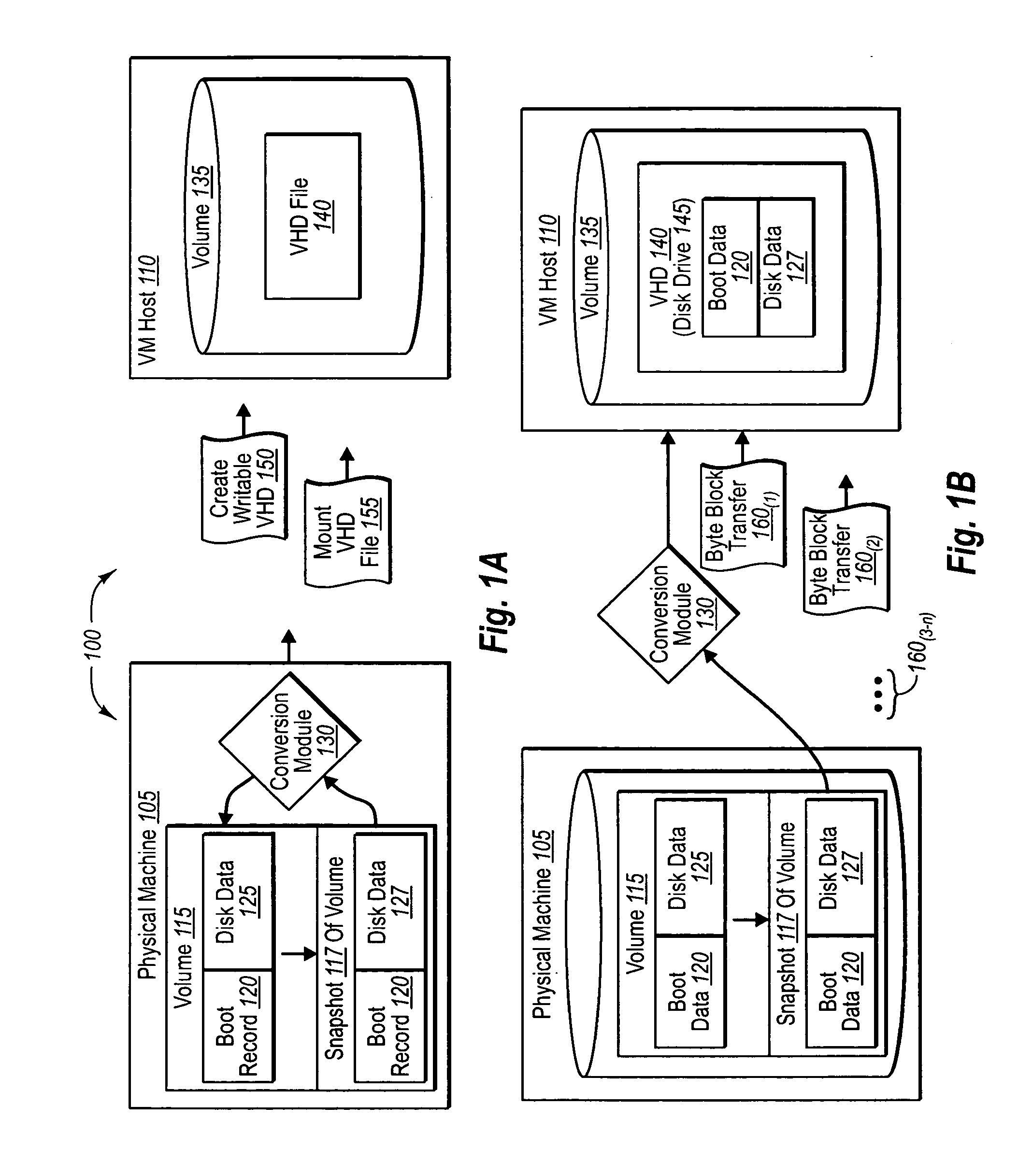Converting physical machines to virtual machines
a virtual machine and physical machine technology, applied in the field can solve the problems of not being able to consolidate physical machines, not being able to create usable virtual machines, and simply providing conventional storage and/or network traffic management functions, etc., to achieve the effect of efficient conversion of physical machines to virtual machines, fast copying, and transfer
- Summary
- Abstract
- Description
- Claims
- Application Information
AI Technical Summary
Benefits of technology
Problems solved by technology
Method used
Image
Examples
Embodiment Construction
[0021] The present invention extends to systems, methods, and computer program products configured to efficiently convert physical machines to virtual machines. In particular, implementations of the present invention allow physical machine volume data to be quickly copied, transferred, and made bootable, such as at a virtual machine host (or other appropriate computer system), without necessarily having to take the physical machine offline. In one implementation, for example, one or more application writers (e.g., via a volume shadow copy service) can be used to create an application (and / or file system)-consistent snapshot of one or more physical machine volumes while the one or more volumes remain online. The snapshot(s) can then be transferred using efficient transferring means (e.g., block level copy) to a virtual hard disk file at a host server. Operational information (e.g., boot data, system registries and binaries, etc.) associated with the transferred snapshot data can then...
PUM
 Login to View More
Login to View More Abstract
Description
Claims
Application Information
 Login to View More
Login to View More - R&D
- Intellectual Property
- Life Sciences
- Materials
- Tech Scout
- Unparalleled Data Quality
- Higher Quality Content
- 60% Fewer Hallucinations
Browse by: Latest US Patents, China's latest patents, Technical Efficacy Thesaurus, Application Domain, Technology Topic, Popular Technical Reports.
© 2025 PatSnap. All rights reserved.Legal|Privacy policy|Modern Slavery Act Transparency Statement|Sitemap|About US| Contact US: help@patsnap.com



